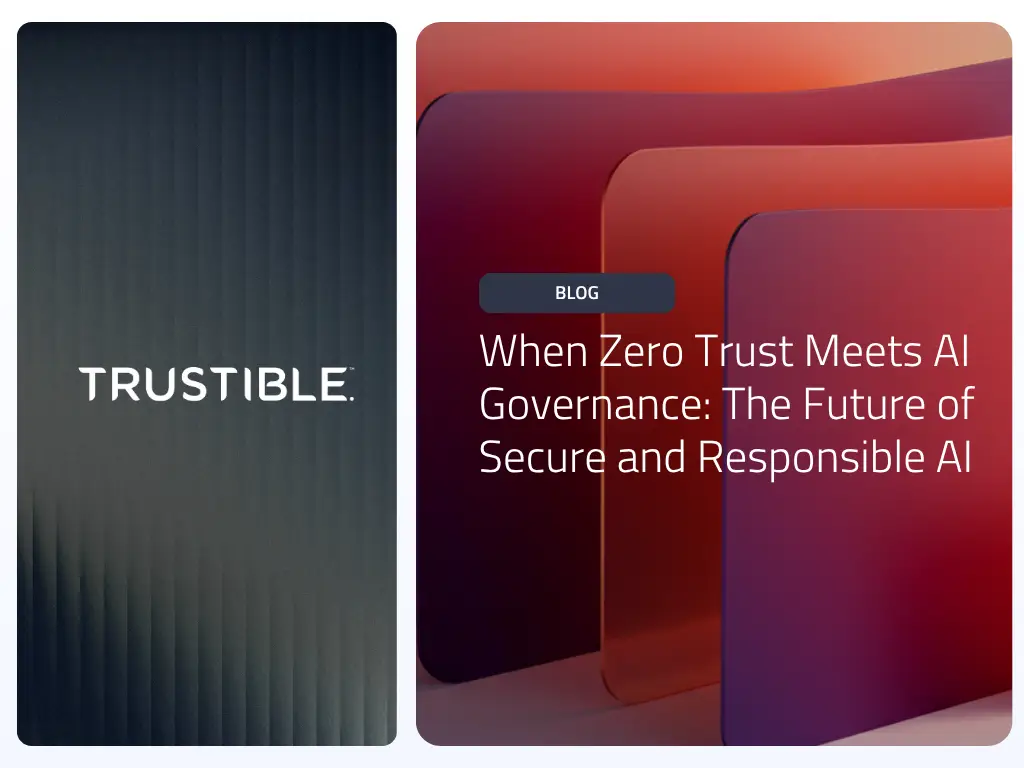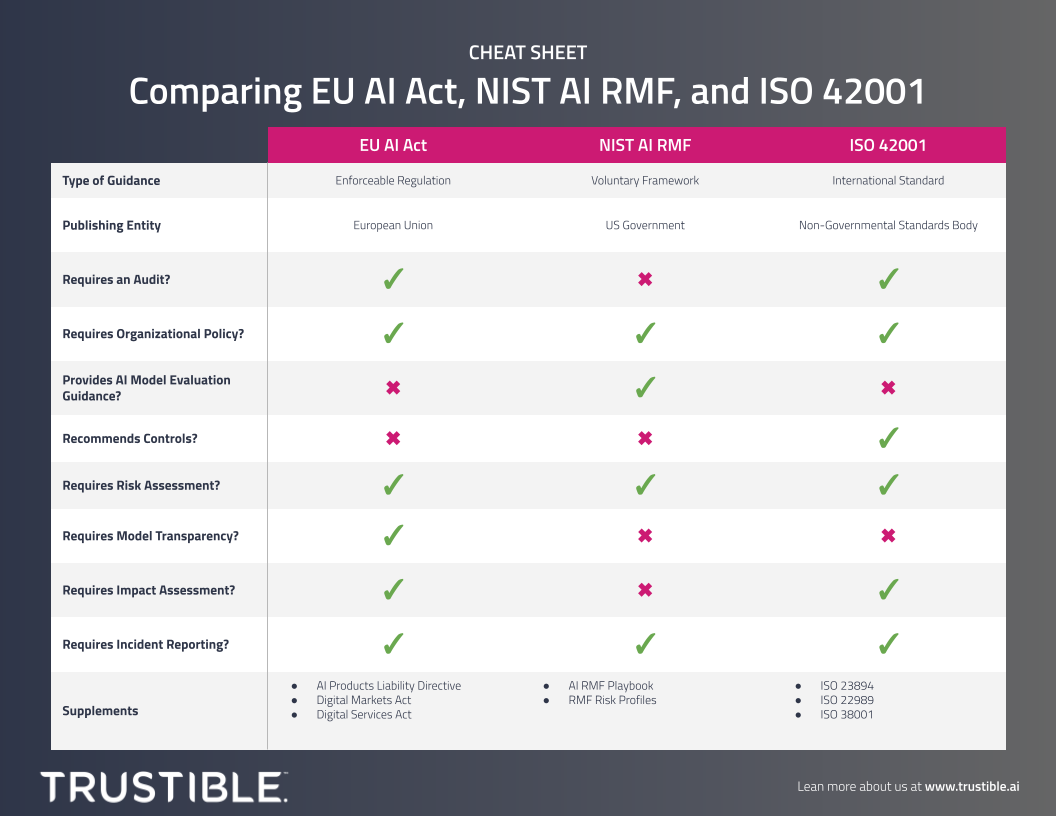Navigating the evolving and complex landscape for AI governance requirements can be a real challenge for organizations. We’ve created this comprehensive cheat sheet comparing three important compliance frameworks: the EU AI Act, the NIST AI Risk Management Framework, and ISO 42001. This easy to understand visual maps the similarities and differences between these frameworks, providing a concise reference for organizations implementing responsible AI guardrails.

When Zero Trust Meets AI Governance: The Future of Secure and Responsible AI
Artificial intelligence is rapidly reshaping the enterprise security landscape. From predictive analytics to generative assistants, AI now sits inside nearly every workflow that once belonged only to humans. For CIOs, CISOs, and information security leaders, especially in regulated industries and the public sector, this shift has created both an opportunity and a dilemma: how do you innovate with AI at speed while maintaining the same rigorous trust boundaries you’ve built around users, devices, and data?


